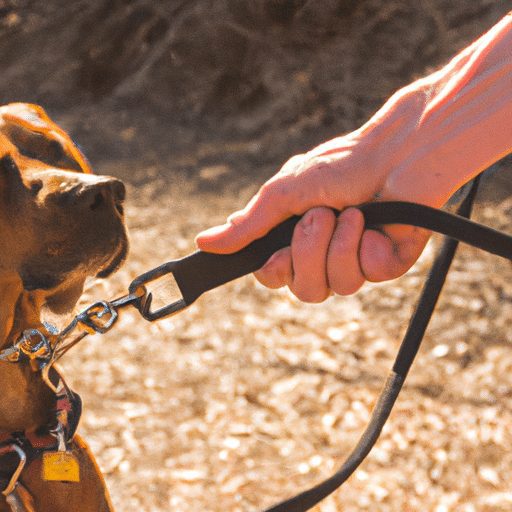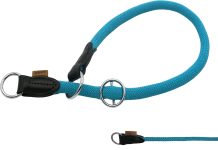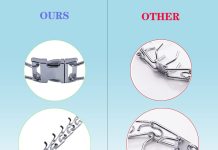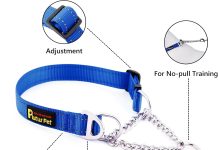Hey, dog lovers! Have you ever wondered if it’s possible to train your furry friend not to pull on the leash during walks? Well, good news: it is! This article will explore the fascinating dog training world and unveil the secrets behind teaching your puppy to walk politely by your side.
Whether you’ve got a miniature dachshund or a big, strong Labrador, we’ve got you covered with some tips and tricks to have your pup strut in line in no time. So please put on your walking shoes, and let’s get started!
The Importance of Training a Dog Not to Pull
Training a dog not to pull on a leash is crucial for several reasons. It helps prevent injuries to both the dog and the owner and improves the overall walk experience. Training a dog not to pull strengthens the bond between the dog and its owner. By understanding why dogs pull and utilizing effective training methods, pet owners can successfully teach their dogs not to pull on the leash.
Table of Contents
Preventing Injuries
One of the primary reasons to train a dog not to pull is to prevent injuries. When a dog pulls on the leash, it can cause strain on the owner’s arm, leading to muscle aches or even injuries. Additionally, if the dog suddenly lunges or jerks, it can result in the owner losing their balance and potentially falling. This can be especially dangerous for elderly or physically fragile individuals. By teaching the dog not to pull, these risks can be minimized, ensuring the ‘sowner’s and the dog’s safety.
Improving the Walk Experience
Training a dog not to pull also significantly improves the overall walk experience. Constant pulling can make walking a frustrating and unpleasant experience for the dog and the owner. It can lead to strained arms, tugging matches, and a lack of enjoyment during the walk. However, teaching the dog how to walk calmly on a leash makes the walk more enjoyable and relaxing for everyone involved. It allows the dog and the owner to enjoy each other’s company without the constant battle of tugging and pulling.
Building a Strong Bond
Training a dog not to pull on a leash can also help build a stronger bond between the dog and its owner. Dogs thrive on positive reinforcement and clear communication. By teaching them proper leash manners, we establish ourselves as their leaders and create a sense of trust and respect. This bond extends beyond the leash and spills into other areas of the dog’s life. When a dog understands and respects its owner’s guidance, it can lead to improved behavior overall.
Understanding Why Dogs Pull
Before addressing how to train a dog not to pull, it is essential to understand why dogs pull in the first place. By recognizing the underlying reasons, we can address them appropriately during training. Here are a few common reasons why dogs pull on the leash:
The Natural Instinct
Dogs have an instinct to explore and investigate their surroundings. When restrained by a leash, they may pull to reach places or objects they find intriguing. This instinctual behavior is deeply ingrained in their nature and needs to be managed effectively.
Seeking Stimulation or Distraction
Dogs may also pull on the leash if they seek stimulation or become distracted by something they find exciting. This could be a squirrel running by, an enticing scent, or other animals and people. They may pull to get closer to the source of their interest, leading to a frustrating and potentially dangerous walk.
Lack of Training or Reinforcement
Finally, dogs may pull on the leash simply because they have not received proper training or reinforcement. If a dog has not been taught how to walk calmly on a leash from an early age, it may develop the habit of pulling. Inconsistent or ineffective training methods can also contribute to this behavior. Therefore, providing proper training and reinforcement is essential to prevent or correct pulling behavior.
Methods for Training a Dog Not to Pull
Several effective methods exist for training a dog not to pull on a leash. These methods focus on positive reinforcement, clear communication, and teaching the dog alternative behaviors. Here are three popular techniques:
Positive Reinforcement
Positive reinforcement is a highly effective training method that rewards good behavior rather than punishes unwanted behavior. When a dog walks calmly on a leash without pulling, it should be praised and rewarded with treats, verbal praise, or playtime. This reinforces the desired behavior and encourages the dog to repeat it in the future.
Clicker Training
Clicker training is a specific form of positive reinforcement training that uses a small device, known as a clicker, to signal desirable behavior. By associating the clicker’s sound with rewards, dogs learn to understand the desired behavior more clearly. When the dog walks without pulling, the owner can click the clicker and offer a treat or praise, reinforcing the behavior.
Leash Techniques
Specific leash techniques can also discourage pulling and encourage loose-leash walking. These techniques involve adjusting the leash’s grip, length, or direction to redirect the dog’s attention and prevent pulling. For example, stopping and changing direction when the dog pulls can communicate to the dog that pulling leads to an undesirable outcome, while walking calmly on a loose leash leads to forward movement.
Step-by-Step Guide to Training a Dog Not to Pull
Training a dog not to pull on a leash requires a step-by-step approach to ensure effective learning. Here is a guide outlining the key steps involved:
1. Establishing a Foundation
Before starting leash training, it is crucial to establish a strong foundation of basic obedience commands such as “sit,” “stay,” and “come.” These commands form the basis of communication and control during walks.
2. Teaching Loose-Leash Walking
To begin teaching loose-leash walking, start in a distraction-free environment such as a backyard or a quiet indoor space. Use positive reinforcement techniques and rewards to encourage the dog to walk calmly beside you without pulling. Gradually increase distractions over time, reinforcing the desired behavior at each step.
3. Addressing Distractions
Once the dog has become proficient in loose-leash walking in controlled environments, gradually introduce distractions such as other dogs, people, or enticing scents. This helps the dog to remain focused and walk calmly on a leash despite external distractions. Continue reinforcing good behavior and providing rewards to encourage consistency.
Common Challenges and How to Overcome Them
While training a dog not to pull can be a rewarding process, it is essential to address common challenges that may arise. Here are some common challenges and tips on how to overcome them:
Dog’s Size and Strength
Controlling a dog is pulling behavior may be more challenging if it is particularly large or firm. In such cases, using training tools such as no-pull harnesses or head halters can provide additional control and support. These tools distribute the dog’s pulling force more evenly and redirect their attention, making it easier for the owner to manage the pulling behavior.
Pulling in Certain Environments
Some dogs may pull more in specific environments that they find particularly stimulating, such as parks or busy streets. It is crucial to anticipate and prepare for these situations by reinforcing the desired behavior through positive reinforcement, redirecting the dog’s attention, and using appropriate leash techniques. Consistency and patience are crucial to overcoming this challenge.
Unpredictable Behavior
Dogs may exhibit unpredictable behavior during training, such as sudden lunging or pulling. In such cases, it is essential to remain calm, redirect the dog’s attention, and reinforce the desired behavior. Consistency in training and setting clear boundaries will help the dog understand and correct their behavior over time.
Tips for Successful Training
To ensure successful training of a dog not to pull, here are some helpful tips to keep in mind:
Consistency and Patience
Consistency is crucial when training a dog not to pull. Establishing and enforcing the rules consistently will help the dog understand what is expected of them. Patience is also essential, as it may take time for the dog to grasp the desired behavior. Rome wasn’t built in a day, nor is a well-trained dog!
Keeping it Positive
Positive reinforcement is the key to successful training. Always reward and praise the dog for good behavior, and avoid using punishment or force, as this can result in fear and anxiety. A positive and friendly approach will create a safe and trusting environment for the dog and the owner.
Gradual Progression
Training a dog not to pull is a gradual process. Start in a controlled environment with minimal distractions and gradually increase distractions as the dog becomes more proficient. This gradual progression allows the dog to develop skills and learn to behave appropriately in various situations.
Training Tools and Equipment
Various training tools and equipment can assist in training a dog not to pull. Here are three commonly used ones:
No-Pull Harnesses
No-pull harnesses discourage pulling by redirecting the dog’s pulling force without causing discomfort or pain. These harnesses distribute the force more evenly across the dog’s body, making it easier for the owner to control the pulling behavior.
Head Halters
Head halters, such as Gentle Leaders or Haltis, gently guide the dog’s head and muzzle, redirecting their attention and preventing pulling. When the owner gently controls the dog’s head, it becomes easier to communicate and guide the dog’s movements.
Martingale Collars
Martingale collars are a type of collar that tightens slightly when the dog pulls, preventing them from slipping out of the collar while providing a gentle correction. These collars are designed to prevent choking or discomfort, making them a suitable tool for training a dog not to pull.
Professional Assistance for Difficult Cases
In some cases, training a dog not to pull may prove challenging, especially if the dog has deep-rooted behavioral issues. Seeking professional assistance can be beneficial in such situations. Here are some aspects to consider:
When to Seek Help
If attempts to train a dog not to pull have been unsuccessful or if the dog’s behavior poses a risk to their well-being or the safety of others, it may be time to seek help from a professional dog trainer or behaviorist. These experts have the knowledge and experience to address complex behavioral issues and provide tailored solutions.
Choosing a Certified Trainer
When seeking professional assistance, choosing a certified dog trainer or behaviorist is crucial. Certification ensures that the trainer has undergone proper education and training and follows ethical standards. Researching and selecting a reputable professional is essential for the best outcome.
Behavior Modification Techniques
Certified trainers and behaviorists employ behavior modification techniques to address pulling behavior under challenging cases. These techniques focus on identifying the root cause of the behavior and implementing strategies to modify it effectively. They may involve a combination of positive reinforcement, desensitization, and counter-conditioning to achieve the desired results.
Benefits of Training a Dog Not to Pull
Training a dog not to pull on a leash offers numerous benefits for the dog and the owner. Here are some advantages of successful leash training:
Safer and More Enjoyable Walks
When a dog walks calmly on a leash without pulling, it substantially reduces the risk of injury to the dog and the owner. It creates a safer environment during walks, allowing the owner to enjoy the experience without fearing being dragged or losing control. Safe and enjoyable walks contribute to the dog’s overall well-being and enhance the bond between the dog and its owner.
Enhanced Communication
Training a dog not to pull strengthens the communication between the dog and its owner. The owner establishes clear expectations and boundaries by consistently reinforcing and rewarding the desired behavior. This transparent communication allows the dog to understand and respond to the owner’s guidance more effectively, leading to better obedience and cooperation.
Improved Behavior in Other Areas
Leash training not only improves the dog’s behavior during walks but also positively impacts its behavior in other areas of life. The discipline and respect established during leash training spill over into other aspects of the dog’s behavior, such as listening to commands, interacting with other animals or people, and respecting boundaries.
The training instills confidence and a sense of understanding in the dog, reflecting its overall behavior.
Conclusion
Training a dog not to pull on a leash is important and achievable. By understanding why dogs pull, utilizing effective training methods, and staying consistent and patient, pet owners can teach their dogs to walk calmly and respectfully by their side.
The benefits of successful leash training extend beyond safe and enjoyable walks – they create a stronger bond between the dog and its owner, enhance communication, and improve the dog’s overall behavior. With the right tools, techniques, and professional guidance, every dog can learn to walk politely on a leash, helping them and their owners create a harmonious and rewarding relationship.




































